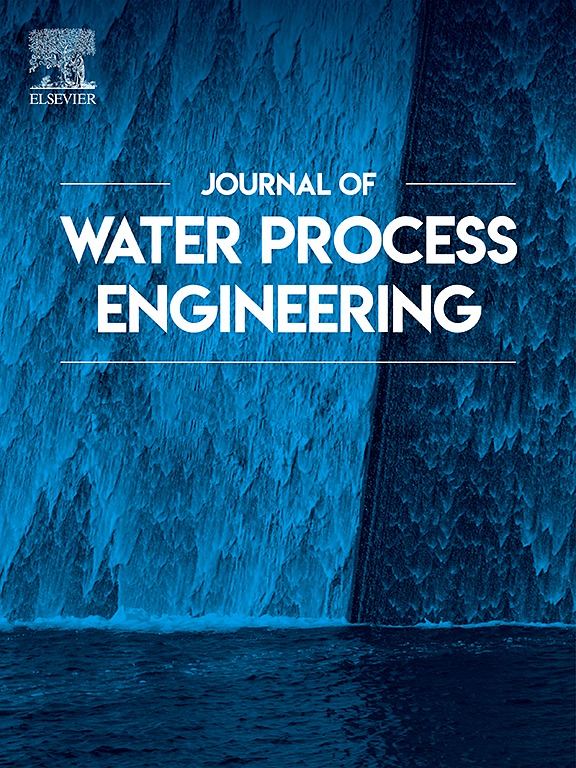High-strength domestic wastewater treatment using Epipremnum aureum as the cathodic plant in a constructed wetland-microbial fuel cell
IF 6.3
2区 工程技术
Q1 ENGINEERING, CHEMICAL
引用次数: 0
Abstract
Constructed wetlands (CWs) and microbial fuel cells (MFCs) are efficient and cost-effective methods for wastewater treatment. This study utilized a novel coupled CW-MFC system employing a ceramic separator to treat domestic wastewater with a chemical oxygen demand (COD) range of 200–800 mg/L and a hydraulic retention time (HRT) of 12–24 h. The novelty lies in the use of Epipremnum aureum as a floating macrophyte in the anode chamber and as a cathodic plant, eliminating the need for external aeration and enhancing overall system performance. This plant was selected for its high radial oxygen loss, adaptability to aquatic environments, and ability to improve COD and nutrient removal efficiencies. Dolochar was employed as an adsorbent to achieve phosphorus and non-biodegradable organic removal. The maximum COD RE of 94 % and power density of 4.9 W/m3 (COD-200 mg/L, HRT-24 h) were observed in the CW-MFC. With cathodic plants in the cathodic compartment, NH4+, NO3−, and TN removal were 81.5 %, 56.9 %, and 72.9 %, respectively, with a PO43− removal of 42 %. NO3− removal doubled, and PO43− removal increased 2.2 times with cathodic plants. Phosphorus removal after adsorption reached a maximum of 66 %, and COD removal increased to 94.6 %. The coupled CW-MFC system demonstrated high efficiency in COD removal, power generation, and nutrient removal, making it promising for sustainable wastewater treatment.

求助全文
约1分钟内获得全文
求助全文
来源期刊

Journal of water process engineering
Biochemistry, Genetics and Molecular Biology-Biotechnology
CiteScore
10.70
自引率
8.60%
发文量
846
审稿时长
24 days
期刊介绍:
The Journal of Water Process Engineering aims to publish refereed, high-quality research papers with significant novelty and impact in all areas of the engineering of water and wastewater processing . Papers on advanced and novel treatment processes and technologies are particularly welcome. The Journal considers papers in areas such as nanotechnology and biotechnology applications in water, novel oxidation and separation processes, membrane processes (except those for desalination) , catalytic processes for the removal of water contaminants, sustainable processes, water reuse and recycling, water use and wastewater minimization, integrated/hybrid technology, process modeling of water treatment and novel treatment processes. Submissions on the subject of adsorbents, including standard measurements of adsorption kinetics and equilibrium will only be considered if there is a genuine case for novelty and contribution, for example highly novel, sustainable adsorbents and their use: papers on activated carbon-type materials derived from natural matter, or surfactant-modified clays and related minerals, would not fulfil this criterion. The Journal particularly welcomes contributions involving environmentally, economically and socially sustainable technology for water treatment, including those which are energy-efficient, with minimal or no chemical consumption, and capable of water recycling and reuse that minimizes the direct disposal of wastewater to the aquatic environment. Papers that describe novel ideas for solving issues related to water quality and availability are also welcome, as are those that show the transfer of techniques from other disciplines. The Journal will consider papers dealing with processes for various water matrices including drinking water (except desalination), domestic, urban and industrial wastewaters, in addition to their residues. It is expected that the journal will be of particular relevance to chemical and process engineers working in the field. The Journal welcomes Full Text papers, Short Communications, State-of-the-Art Reviews and Letters to Editors and Case Studies
 求助内容:
求助内容: 应助结果提醒方式:
应助结果提醒方式:


